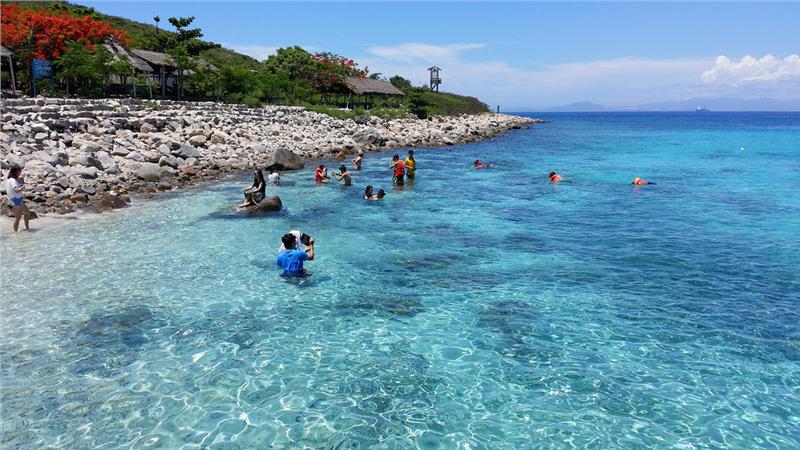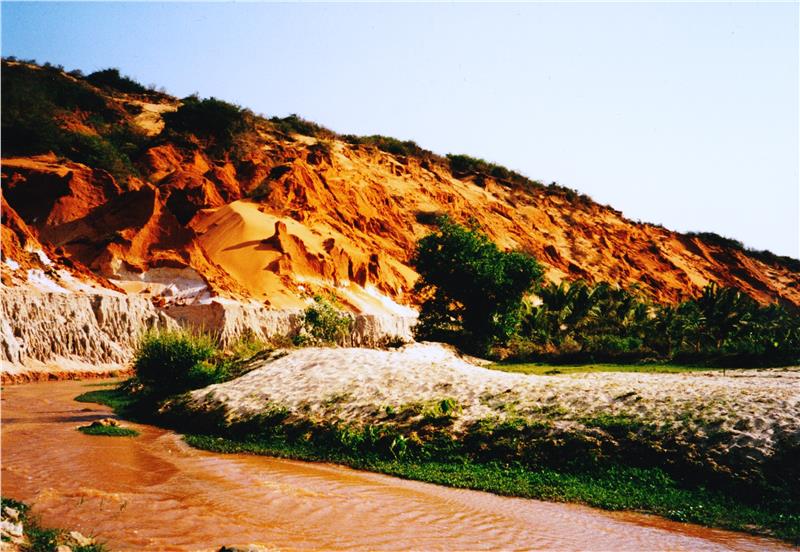South Central Coast Vietnam is situated in a tropical monsoon climate. The weather in this region is portrayed by high temperature, hot and humid climate, high light intensity, much rainfall in a number of months in a year. Therefore, the region often witnesses annual droughts and rainstorms, causing huge losses of life and property. The total annual temperature ranges from 85000C – 90000C. The total radiation reaches 100-160 Kcal/cm2, increasing from north to south. Meanwhile, the total number of hours of sunshine fluctuates around 2000-3000 hours per year.

In South Central Coast Vietnam, there are seven coastal provinces and a municipality Da Nang in the south of Central Vietnam (from the south of Hai Van Pass). This region is wider at this point than in the North Central Coast. The region is less impacted by the northeast monsoon, as it is prevented by Bach Ma Mountain range. Instead, in summer, the region is affected by the southwest monsoon from Gulf of Thailand passing over Truong Son Mountain range, causing a hot and dry weather in the entire area. The temperature ranges from 21°C to 32°C all year round. The highlight point in Central Vietnam weather is that rainy season and dry season do not occur at the same period in year, like weathers in Northern Vietnam and Southern Vietnam. South Central Coast Vietnam weather belongs to the climate of the Eastern Truong Son Range, which is in the area affected by typical tropical monsoon climate. The climate is described by rainy season and dry season. The rainy season starts from August to December or January in the next year. Thus, spring and summer are the ideal periods for traveling this region. Due to heavy rainfall averaging about 2500 - 3000mm/year and occurring in a short period, so in the rainy season rivers and streams become very aggressive, perhaps causing floods and landslides in many remote places, while in dry season, drought causes loss in thousands of hectares of farmland.

Despite locating in tropical region where there is the meeting of continental airs and equatorial oceanic origin, the region is deeply influenced by Asian monsoon, mainly northeast and southeast monsoons. The seaward fragmented terrain of Truong Son Mountain Range forming the “wall” – Hai Van Pass. Annually, Vietnam climate in South Central Coast is almost influenced by southeast wind, so year-round climate in the area is always hot and humid. If comparing the weather in South Central Coast with other part in Central Vietnam in the north of Hai Van Pass, the fluctuation of climate in the South Central Coast is negligible. The average temperature gap between the coldest and hottest months is low, around 5°C, while in the northern part of Hai Van Pass, that gap is about 9°C and above.
A large rainfall along with steeping river system have created the region an enormous potential in investment and development of hydroelectric power to meet the needs of increasingly high industrialization and modernization in the country. To sum up, the Central Vietnam weather in general, and the weather in South Central Coast region in particular is complicated, the annual change of weather in the region varies time to time and place to place. The difference makes economic activities in specific area various with individual characteristics. If utilizing and exploiting this region well, it will be one of favorable conditions for provinces in the region to develop a diversified, comprehensive and sustainable economy.
